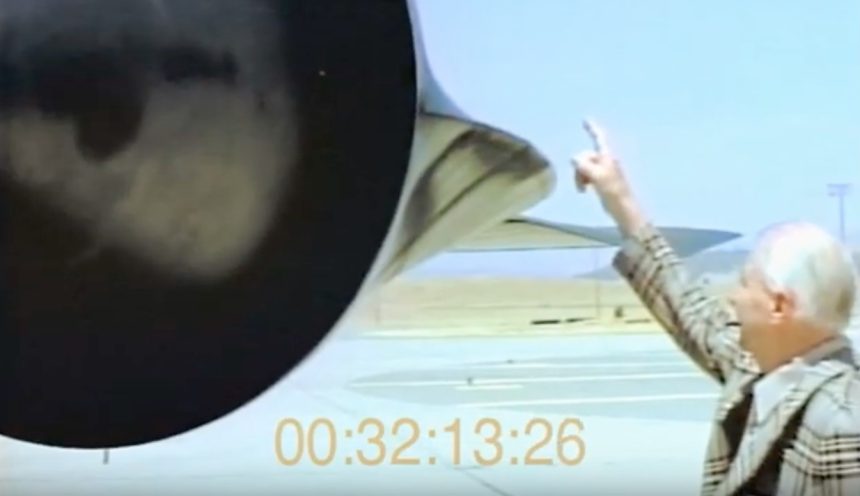Enjoy a walkaround of the Blackbird with legendary engineer Kelly Johnson.
Clarence Leonard “Kelly” Johnson (February 27, 1910 – December 21, 1990) is one of the most important aircraft design engineers in the history of aviation. was an American aeronautical and systems engineer.
As the original founder of record, member and first team leader of the famous Lockheed Skunk Works, Johnson broke barriers in innovation and defense acquisition that changed the world of aviation, contributing to design and development, among all the others, of the Lockheed P-80 Shooting Star, the F-104 Starfighter, and the U-2 spy plane, and the SR-71 Blackbird.
Here’s how our own Tom Demerly described the legendary engineer in an article about the 75th anniversary of the Skunk Works:
Johnson, the round-faced, blunt-speaking character who seemed to have aerodynamic engineering in his genetic make-up, went on to make aviation history in more ways than can be able to accurately (and publicly) tabulated. Perhaps more so than the engineers of the early NASA space programs, Kelly Johnson made being an engineer cool. Johnson was awarded an unprecedented two Collier Trophies, an annual award presented by the U.S. National Aeronautic Association for the person who made the most significant contribution to aerospace. He was also awarded the Presidential Medal of Freedom.
Successor to the Skunk Works throne, colleague and later President Ben Rich, said in his book, “Skunk Works” that Kelly Johnson was, “The toughest boss west of the Mississippi, or east of it too, suffered fools for less than seven seconds, and accumulated as many detractors as admirers at the Pentagon and among Air Force commanders.”
However, the aircraft whose name has almost become a synonym for Kelly Johnson is the Lockheed SR-71 “Blackbird”, the famous high-altitude Mach 3 reconnaissance aircraft that is still holding, as of 2019, the record for the fastest air-breathing manned aircraft, established in 1976. For this reason, the following clip is truly remarkable as it shows Johnson talking about his greatest creation, that in this uncut interview describes as “a huge flying fuel tank”.
You can see Johnson doing a walkaround of the SR-71, the powerful P&W J-58 turbo ramjets “that work as an ordinary turbojet up until about 1600 mph, then at that speed, it shift its actual cycle and becomes a ramjet”, the wing that “is a basic delta plan form with a conical camber which is a twist that gives us better crosswind landing characteristics and less drag when we go supersonic”. Noteworthy is also the way Johnson talks about the chines, shaped so as to reduce the radar return of the aircraft that, as explained in a recent story, can somehow be considered the first stealth aircraft ante litteram. Then, Johnson explains the aircraft’s peculiar movable conical spike used to change the inlet’s geometry. As we explained in detail in a previous article, the spike was used to control the supersonic air flow and position the shockwaves generated by the air slowing down into the throat of the inlet to obtain the best performance, while preventing the supersonic flow to reach the compressor. The spike was in a full forward position during subsonic flight; above 30,000 feet and Mach 1.6 the spike started moving after into the throat to keep the shockwaves in the same optimum position. The spike moved approximatively one and 5/8 inches per 0.1 Mach, for a total maximum travel of 26 inches after into the inlet in the full retracted position.
We don’t know when this interview was filmed but it should be some time between 1975 (when Johnson retired) and 1983 (when he made one last known interview). At the end of the clip Johnson says: “I think it will be a long long time before we have an aircraft with higher performance than the SR-71”. He was right: the last flight of an SR-71 took place on Oct. 9, 1999. Fourteen years later, in 2013, Lockheed Martin’s Skunk Works revealed the existence of a sort of SR-71 replacement: a Hypersonic intelligence, surveillance and reconnaissance (ISR) and strike aircraft dubbed SR-72, designed for Mach 6.
To date, the Mach 3+ SR-71 Blackbird remains the fastest, manned air-breathing aircraft ever produced.









